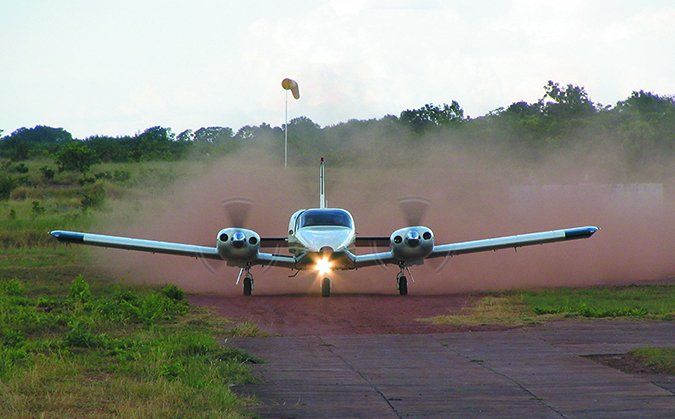As we have reported in previous used aircraft articles, used piston twins are generally good deals in the current sales market. The Beech Baron, Travel Air, Piper Aztec and even the Beech Duke are all examples. On the other hand, for various reasons, the market for new piston twins remains relatively flat, and there are few models for the taking. Piper builds two of them, the Seminole and the Seneca. Both have endured for various reasons, although neither is made in much volume these days.
It’s easy to see why the Seneca has endured. Arguably, it does nothing extraordinarily well—it’s not exceptionally fast or a joy to fly, nor will it turn heads on the ramp—but it does a lot we’ll enough.
But one can be affordable to buy and maintain (earlier ones, anyway), carries a good load and flies without any nasty habits. There are plenty of used examples on the market and the Seneca remains popular as a multi-engine trainer, but it’s not the sort of airplane anyone who learned in will want to immediately ditch in favor of something sexier.
In our view, the Seneca is an entirely reasonable airplane. That, more than anything, may explain why it endures in Piper’s line, although the latest Seneca V is far more complex than the original Seneca I. The Seneca V is one of only five twins still in production—the others being the Baron, Piper’s own Seminole, the Diamond Twin Star, plus the Tecnam P2006T.
Model History
All modern manufacturers are known for so-called “parts bin” engineering—stretching the parts and pieces of one model into another, something that makes perfect sense. But few have been as good at it as Piper has.
The Cherokee line began with the Cherokee Six, the Saratoga and the Seneca. Saw off the wings of a Seneca and a Cherokee Six and you couldn’t tell the two apart. The Seneca first appeared in 1971, when GA was still a growing industry and there was actually headroom for new twins. At the time, the Aztec—a good seller for Piper—and the Comanche were growing long in the tooth and Piper needed something new.
The Seneca started out with counter-rotating Lycoming IO-360C1E6 engines producing 200 HP each (think of a Piper Arrow, times two) and at its introduction, it cost about the same as the Twin Comanche C/R model, but had larger engines, a higher gross weight and a roomier cabin with a rear door that the so-called Twinkie lacked. In other words, it was close to cabin-class comfort for about $63,000 equipped.
Both the Seneca and the Twin Comanche were built in 1972, but when Tropical Storm Agnes pushed the Susquehanna River into Piper’s Lock Haven works, the Twin Comanche drowned with it and the Seneca was moved to Piper’s new Florida operation.
Piper built 360 Senecas that year, a good start in the twin market where the competition was the Cessna Skymaster, which sold poorly in 1972. In three years, Piper sold 933 Seneca Is, dramatically outdoing the Aztec and Comanche.
Part of this was due, no doubt, to Piper’s decision to modernize the airframe. It dumped the Comanche’s Byzantine plumbing, favoring a fuel system with only three positions: on, off and crossfeed. Since the airplane had counter-rotating props, there was no worry about critical engines, either.
The Seneca was based on the wildly successful PA-32 series with a long and wide cabin, true seating for six, a big aft door on the left and a cockpit door on the right. Since passengers might not like climbing over wings, this design proved a favorite among charter operators and for owners with big families. It still does. And despite its boxy shape, Piper applied some styling touches to make the aircraft fairly attractive. Early interiors, apart from that unfortunate velour upholstery, were also a step up from early efforts. The modern Seneca V has dropped one of the seats in favor of an optional entertainment/refreshment center. Add air conditioning, nice cabin lighting, leather and all of the other high-end amenities current buyers expect and it’s obvious the Seneca has come a long way—and with an even longer price tag.
The original Seneca I was a good start, but it was lacking, too. Pitch stability wasn’t the best and the controls were on the heavy side—Bonanza and Baron pilots wouldn’t like it much. The airplane also had noticeable Dutch roll in turbulence, which would tax the stomachs of the backseat passengers.
There were design and production issues, too, that led to a lot of ADs. Records indicate that the original Seneca is subject to close to 50 ADs, counting the shotgun ADs that apply to many other airplanes, a dubious record.
To its credit, Piper didn’t sit still. It corrected the Seneca’s handling and noise/vibration shortcomings. The ailerons were changed to a modified Frise design and made larger. The engine mounts were changed and soundproofing was added. Piper also changed some of the weights to give pilots the option of carrying more weight or more fuel. Gross weight was increased from 4000 to 4200 pounds. The increase carried with it a price, of course.
Single-engine performance at the higher gross weight was marginal, at best. Single-engine rate of climb sank from 230 FPM to 190 FPM and single-engine ceiling from 5200 feet to 3650 feet. Piper also introduced a new limitation: a zero-fuel weight of 4000 pounds, meaning that any weight over 4000 pounds had to be in fuel, not payload.
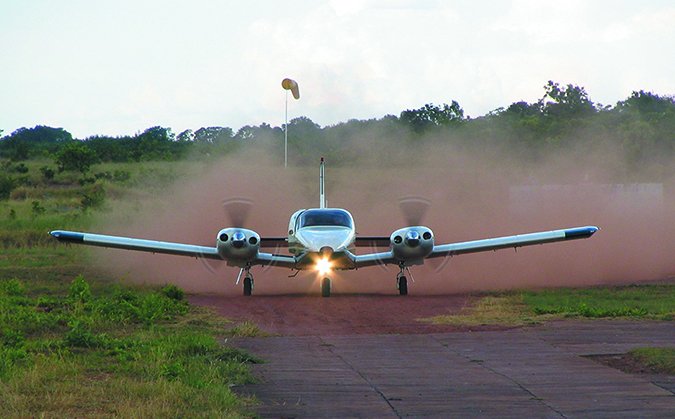
Seneca II
With a strong if not a hot seller on its hands, Piper continued to improve the Seneca with the PA-34-200T Seneca II. More changes were made to the control system to improve handling. The aileron/rudder interconnect was removed and with it went some control heaviness.
The rudder gained an anti-servo tab and the stabilator was changed with the addition of a bobweight. The ailerons were increased in span and balanced for lighter effort. This time, the changes worked and no major alterations were made after that.
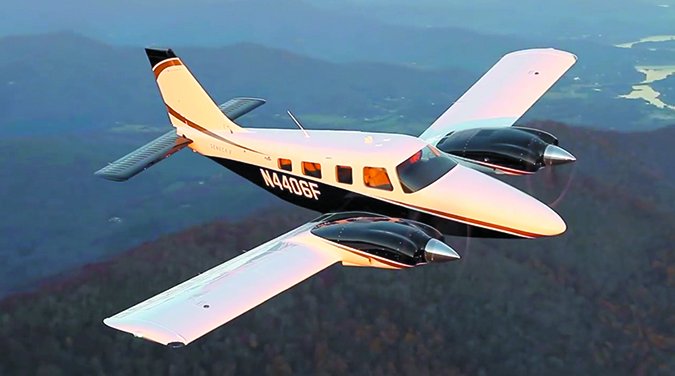

But the big performance change for the Seneca II came in the powerplants, with the four-banger Lycs giving way to six-cylinder turbocharged Continental TSIO-360-E engines with fixed wastegates.
Rated at the same 200 HP at sea level, they produced 215 HP at 12,000 feet. Flying high and fast is nice, of course, but twin drivers worry more about high-altitude engine-out performance. Here, the Seneca II was a different beast entirely.
Single-engine climb rate improved to 235 FPM and single-engine ceiling more than tripled to 13,400 feet. Initial recommended TBO was the same 1400 hours. In 1977, this was increased to 1800 hours and owners report that with careful operation and maintenance, this is realistic. Still, most owners recognize that maintaining the Seneca I’s original Lycoming IO-360 powerplants might be an easier and cheaper affair.
The airplane got a higher gross weight, too, increasing by 370 pounds to 4570 pounds. However, the zero-fuel weight stayed at 4000 pounds, so the benefit was a mixed blessing. And another limiting weight was introduced: a maximum landing weight of 4342 pounds. Once again, pilots were given more flexibility and more ways to get into trouble if the loading limits weren’t obeyed.
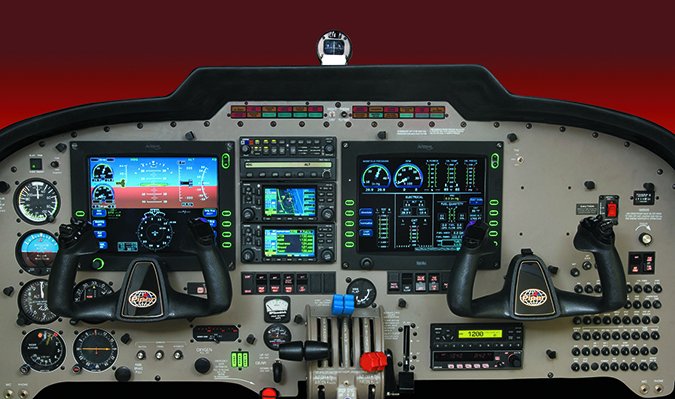

With the improved controls and engines, the Seneca II also got optional extended-range fuel tanks that increased usable fuel from 93 to 123 gallons. The campaign against noise and vibration continued with the addition of a three-blade prop option, which weighed 46 more pounds.
The popular club seating option was also introduced, as was a Janitrol heater and optional fan to move heated or ambient air through the cabin. In later years, some system changes and options were added, such as a priming system to make engine start easier, more powerful brakes, modifications to the instrument panel, plus air conditioning. In 1980, a built-in oxygen system was offered.
Seneca III and Beyond
By the late 1970s, with sales still strong, Piper began overhauling its entire model line, introducing the tapered wings, and had a fling with T-tails in Arrows and Lances.
The 1981 Seneca III was supposed to have the same T-tail and tapered wing as the Lance, but Piper found that the flying qualities weren’t as good as the company had hoped. The configuration was left unchanged. There were still significant changes to the Seneca III, however. A different variant of the Continentals was used, with 220 HP each. These engines had a higher RPM limit (2800 versus 2575 RPM). This, combined with fuel scheduling, resulted in maximum power of 220 HP, albeit time-limited to only five minutes.
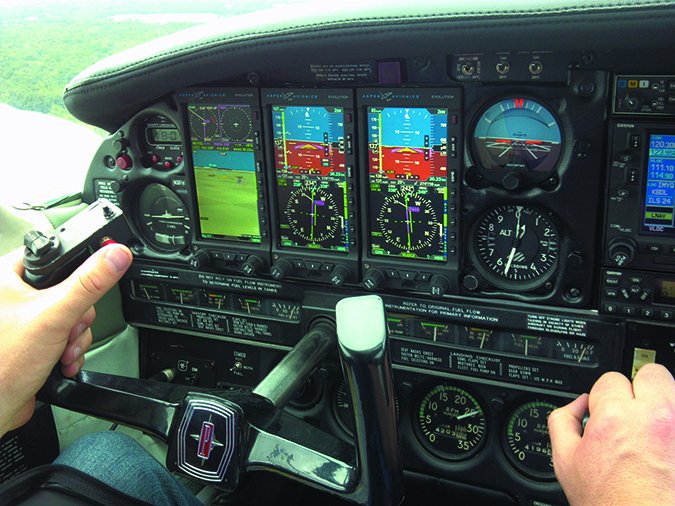

Continuous rated power was still 200 HP. Single-engine rate of climb improved marginally to 240 FPM and all-engine rate of climb went from 1340 to 1400 FPM. However, most other performance figures, such as runway required, declined somewhat due to a further increase in allowable weights, the unavoidable bugaboo of every manufacturer.
The new weight limits were made possible by a reinforced structure. This time, the zero-fuel and landing weights were raised as well. Maximum takeoff weight was now 4750 pounds, zero-fuel weight 4470 pounds and max landing weight 4513 pounds. The pneumatic system (for air-driven instruments and optional de-ice system power) was changed from a pressure to a vacuum system in 1981. According to Piper, this improved mean time between pump failures from an average of 400 hours to more than 700 hours. Owners say that in the field, the pressure pumps last about the same as vacuum pumps.
Other changes to the Seneca III included a new and more modern instrument panel, a one-piece windshield and a switch to electric flaps. We’ve always been fans of manual flaps: They’re simple, positive and hard to break. The move to electric flaps was required because of a change to larger flaps, which resulted in high actuation forces.
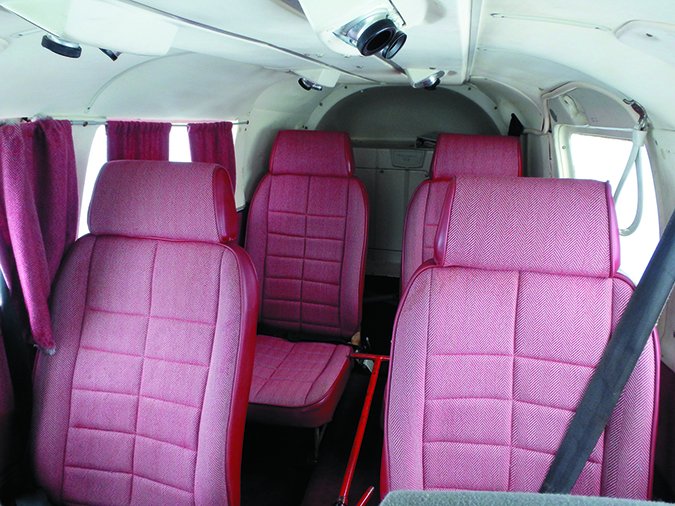

Amazingly, the Seneca never went out of production, even during Piper’s troubled times in the late 1980s and early 1990s. Admittedly, production was down to a trickle (four were built in 1992, for example), but it stayed on the price lists. And it’s still there today.
As part of Piper’s transformation into New Piper, the Seneca was revamped yet again, being redubbed the Seneca IV and later, the Seneca V. Relatively few design changes were made, the most notable being new cowlings that result in higher speeds. Also, the interiors have been markedly improved in recent models, while Garmin’s G1000 integrated avionics fill the instrument panel—completely full.
The Seneca’s wide cabin allows for a wide instrument panel, of course. This means the aircraft is fitted with the three-screen version of Garmin’s G1000 glass avionics suite. This includes dual primary flight displays (PFDs) for both the pilot and copilot, plus a large multi-function display (MFD) in the center. The Seneca V also has Garmin’s integrated GFC700 flight control system and electronic engine instrumentation.
Along with these improvements come much higher prices: When the Seneca IV was introduced in 1994, it sold for about $425,000. A new Seneca V easy flirts with $1 million-plus, making a run at the G58 Baron.
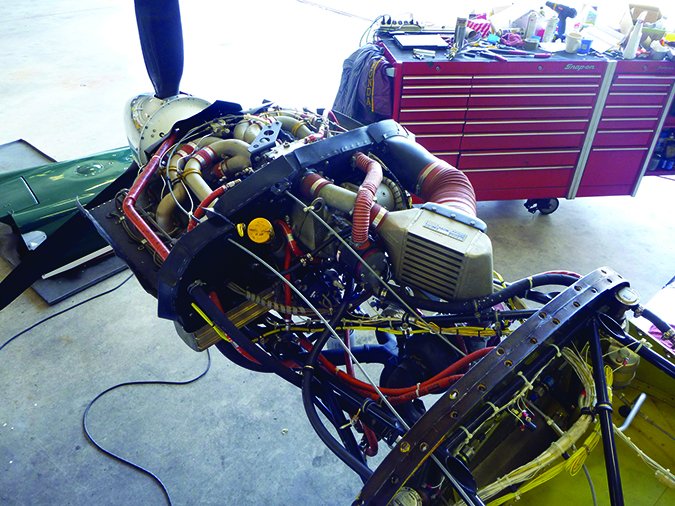

Performance
All of the Senecas offer fairly good short-field performance and sea-level fields of 3000 feet or so are no problem as long as both engines are turning. As noted above, however, later versions are better once airborne. Of all the light twins, the Seneca is among the most benign in the runway environment.
It’s not a fast airplane, however. The normally aspirated early models cruise in the 160- to 170-knot range at 65 percent and 10,000 feet. Limiting speeds are low: 129 to 130 knots for gear extension; 138, 121 and 107 knots for 10-, 25- and 40-degrees flaps, respectively.
One owner we spoke to highly recommends that speedbrakes be fitted. The turbocharged models are, of course, quite a bit faster, especially when taken high. Owners report cruise speeds in the 180-knot or faster range in the high teens and low flight levels on typical fuel flows of 24 to 28 GPH.
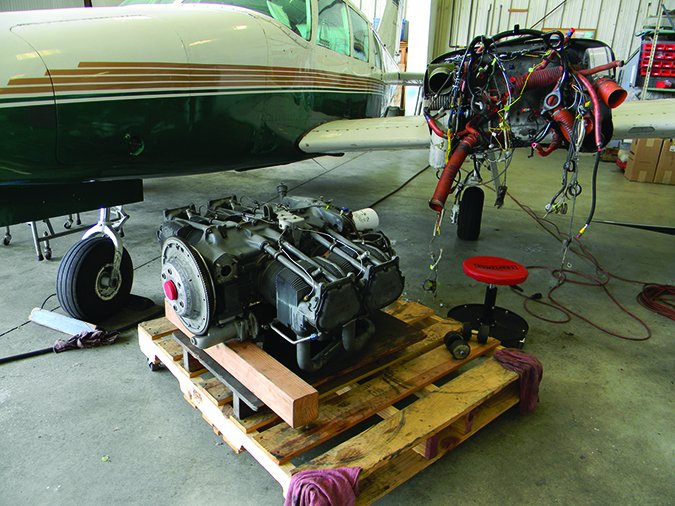

The later Senecas are decent haulers. Loading the Seneca is about as easy as it gets. The fuselage is low to the ground, allowing rear passengers to climb on board easily, and the rear seats are easy to remove. The two baggage compartments have weight limits of 100 pounds apiece. The generous CG range permits flexibility in seat selection and the later models were equipped with a clever visual slide-rule type CG computer, which makes loading a snap.
Owners tells us that early Senecas have useful loads in the 1200- to 1300-pound range while the Seneca II averages closer to 1500 pounds, with its higher gross weight of 4570 pounds. The latest iteration, the Seneca V, has regressed due to higher empty weight, with useful loads in the 1300- to 1400-pound range. That’s the case with many new aircraft, the result of weight-gaining creature comforts. It’s a trade-off.
Cabin and Comfort
With its four-foot-wide cabin, adequate seating for all but the biggest of six people and ample windows, the Seneca is long on comfort in comparison to most other piston-powered airplanes in this class. Although the club seating often yields a tangle of legs in the rear cabin, it’s still appreciated by passengers, according to owners who have contacted us. Given its payload, the Seneca is a good five-person airplane with some baggage or a four-person airplane with a lot of baggage, stowed in either the nose compartment or behind the rear seats in the cabin.
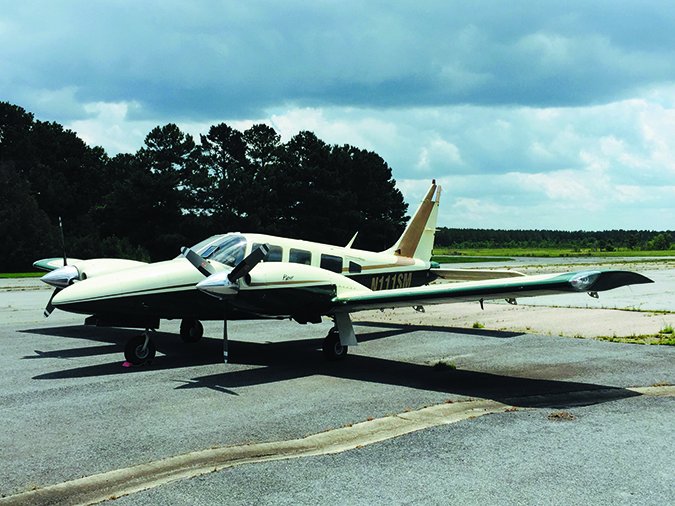

Flight visibility from the cabin is adequate, but not exceptional. The big windows are nice but up front, the large engine nacelles extend forward of the wing leading edge, blocking horizontal and downward visibility.
This, coupled with the wide-chord wing, makes spotting traffic below the airplane difficult. Heating and ventilation are typical Piper, with overhead and floor vents that provide enough air in most circumstances. Seats are also typical Piper, which is to say reasonably comfortable but with a tendency to sag and wear with use. Most owners recommend overhauling them.
Modifications
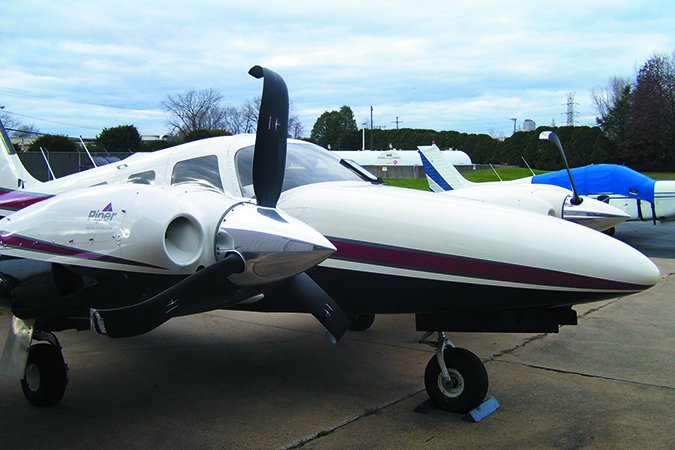

Senecas, beginning with the II, came with fixed wastegate turbochargers. These are relatively simple and inexpensive to manufacture, but at the cost of efficiency as we’ll as longevity and a tendency to overboost due to sensitive throttle response. Owners
say a must-have mod is to fit the engines with Merlyn automatic upper deck air controllers. We’ve heard good reports about these mods and other owners tell us intercoolers can also help. (Contact www.merlynproducts.com or 509-838-7500.)
Due to the low speed restrictions, speedbrakes are a good investment, particularly in heavy traffic areas. Precise Flight makes a set for $4995. Contact: 800-547-2558. For Seneca I owners who want turbocharging, the old Rajay is found on used models, but no longer installed.
Seneca II and III owners can improve their turbos with Turbo-plus intercoolers in kit form. Contact www.turboplus.com or 888-514-4514. Although the takeoff and landing numbers on the Seneca are decent, owners who want better performance can invest in Sierra Industries’ R/STOL kit. Call for pricing and expect a long lead time. Contact: 888-835-9377 or www.sijet.com for more information.
Hartzell Propeller had an aggressive program to install three-blade propellers on the Seneca II and III. The STCs can replace either two-blade Hartzell or three-blade McCauley propellers. The three-blades offer better takeoff and initial climb and also eliminate the RPM/MP restriction applicable to the two-blade propellers. Contact Hartzell at www.hartzellprop.com or 937-778-4200. Although the props are still available, the deals may not be. Check with Hartzell to find out.
The Piper Owner Society supports Seneca buying and ownership and is a good general resource for Pipers of all sorts. Contact 800-313-0582 or www.piperowner.org. Another group is the Piper Flyer Association at www.piperflyer.org.
Owner Comments
I own a 1983 Seneca III that I bought used in 1985 and have been flying it for 30 years. I added two aftermarket devices that are proven great value. One is TurboPlus intercoolers and the other is Precise Flight speedbrakes.
The intercoolers have been completely maintenance-free, but last year I noted increasing discrepancy of the throttle positions starting about 8000 feet, and becoming quite pronounced in the mid teens. A test at a critical altitude using the shop manual showed a significant loss of manifold pressure on the left engine. For a while, I suspected the turbocharger, so I had it de-coked, but found no improvement. Then I thought maybe the intercooler might be leaking internally and allowing some compressed air to bleed off. However, no leaks were found. Finally, I took my expert A&P up for a test flight. He carefully monitored all engine parameters and determined that the high RPM fuel flows were way out of adjustment. He readjusted the fuel pressures for both engines and now everything is fine. Worth noting to other owners is that the intercoolers were not the culprit. Plus, engine performance charts have to be corrected for the drop in temperature that the intercoolers provide.
The great advantage of intercoolers is increased engine output at lower fuel flows, while keeping CHTs we’ll within operating limits.
In fact, the engines run so cool I have learned to keep one oil winterization plate on each engine year-round, adding a second plate for the winter. Otherwise, the oil temps do not get high enough in routine use to boil off condensed water in the crankcase.
The speedbrakes were initially a hybrid electric/hydraulic system, which created problems with rigging and leaks. However, Precise Flight changed them over to all-electric years ago and they have been problem-free ever since. Their great advantage is to allow quicker descents (as ATC so often requests) without shock-cooling the engines. The only maintenance item is assuring that the drains are not clogged or elevated above the bottom of the box. Otherwise, a little bit of water will settle in the boxes and then freeze in flight—preventing extension of the brakes.



0)]
The intercoolers and speedbrakes together have been wonderful for engine life. In the first life of both engines, I never touched the top end of either engine. It was the crankshaft bearings that required overhaul. Now we’ll into the second life of both engines—nearly 15 years, but only about 1000 hours—I have replaced only one cylinder on one engine due to low compression. I highly recommend both these mods for the Seneca. Aside from GPS and satellite weather system upgrades, I would call them the two best things I did for my Seneca in 30 years.
Phil Steeves, N8467X
via email
I moved up from a Piper Cherokee Six-300. I was looking for something with similar efficiency and load-carrying capability and the Seneca, properly equipped, fit that bill for my family of five and our dog.
I think we have all heard and read the conversations about the additional security (or lack thereof) of twin-engine operations. Clearly all pilots, especially of twins, will want to maintain currency. While the Seneca is a step up from a fixed-gear single, it was an easier transition than I expected.
The benefits of the counter-rotating engines make single-engine operations and Vmc demonstrations (practiced or real) a much more manageable event—even for pilots who aren’t practicing these scenarios as often as they should. From a safety point of view, operating a well- equipped twin in regular IMC is a huge benefit over a well-equipped single. I believe the extra alternator and engine provide a lot of options.
While my Seneca has several upgrades (220-HP intercooled engines and three-blade props), it performs right at where the revised operating specifications say it should. I can typically operate the engines at 9.5-10 GPH per side, with 165-knot groundspeeds at 10,000 to 12,000 feet. If I push the power up a bit, I can get 175 knots at 25 to 26 GPH at the same altitudes. I usually plan for 21 GPH total and 165 knots. That enables an easy five-hour endurance, with a little more than required IFR reserves.
From a hauling standpoint, the Seneca is no slouch. As it is currently configured, I can fill the tanks, all five seats plus baggage and never really have to be concerned. Most of the late 1970 to mid 1980 models have very respectable useful loads— typically in the high 1400s to low 1600s, depending on engines and installed equipment.
The cabin for crew and passengers is plenty spacious, but the club seating is best for smaller passengers because the leg-tangle can be a bit awkward for four full-sized adults. Entrance and exit is very easy through the large copilot and pilot-side passenger door. The additional baggage door and nose compartment make for adequate stowage for all but the heaviest of packers.
There are plenty of upgrades and STCs available for all model-year Senecas. The wide instrument panel is a great platform for a wide variety of avionics upgrades. Plus, since the Seneca is still in production, parts are readily available
Many have said that the Piper Seneca is not really great at anything in particular. If you want speed in a similar sized twin, consider the Cessna Turbo 310R. If you want to haul a huge load, maybe consider a Piper Aztec. But, if you want something in the middle, the Seneca seems to be well-placed among light twins.
Andy Jones
via email
My 1973 Seneca I is a capable six-place piston twin, although it’s not incredibly fast. It averages around 145 to 150 knots, but it has a roomy cabin that’s comfortable even on long flights. It’s also stable in flight and easy to fly—aided by the counter-rotating props.
The only thing that takes getting used to when transitioning to it from a single-engine airplane is the amount of back pressure required in the landing flare.
The big drawback in the Seneca is the lack of single-engine climb performance, as it loses about 90 percent during an engine-out situation. This is due to the the empty weight CG being near the forward limit. You can help by having passengers and and cargo in the rear of the airplane.
The only drawback to the cabin is in the middle seats, as they are right behind the pilot seats and don’t provide much legroom until the front seats are moved forward.
Both cargo compartments (nose and cabin) provide ample room, and with 100-pound limits, both provide good flexibility for loading luggage.
I do recommend filling the aft luggage area first, as it helps maintain the CG limits and is fairly accessible in flight.
I usually plan on maximum endurance flights of around three hours, which still allows for 1.5 hours of fuel reserve. I plan on 20 to 24 GPH for fuel expenditures.
I have found the wide instrument panel to be very upgradable, both for flight instruments and panel avionics. My airplane has a three-screen Aspen PFD/MFD suite, S-Tec 55X autopilot, Garmin GTN touchscreen navigators, a satelite weather receiver, ADS-B system, plus digital engine monitors and fuel computers.
The only drawback to all of these upgrades is relying on ample electrical power. Each engine has a 60-amp alternator, which is more than capable of producing the power for all the avionics, but an alternator failure requires load-shedding. Fortunately, the Aspen displays have backup batteries.
As with any airplane, as long as preventive maintenance is kept up with, the annual maintenance cost can be controlled, but like any twin, there is basically two of everything. My experience is that the Lycoming IO-360 engines are excellent, worry-free engines. Quality overhauls can be pricey, but thanks to a 2000-hour TBO and thorough preventive maintenance, this cost can be spread out over a long period.
Overall, my Seneca I has been a great family airplane that I am always praising. I would only improve on two things: more horsepower from the engines—which will help the single-engine performance—and more alternator output to keep up with the increased electrical demands of a panel full of avionics.
Jonathan Baldwin
via email

